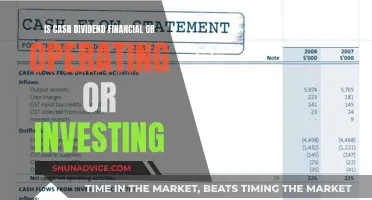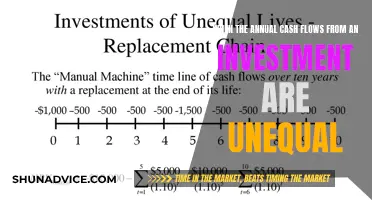
Forex investing is a complex industry that involves buying and selling currencies to make a profit. It requires a deep understanding of various mathematical concepts, including linear algebra. Linear algebra is a branch of mathematics that deals with the study of vectors, matrices, and linear equations. In the context of forex investing, linear algebra can be applied in several ways to analyse and predict market movements, and make informed investment decisions.
One application of linear algebra in forex investing is correlation analysis. By creating a matrix of currency pair historical data, investors can calculate the correlation coefficient between different pairs. This helps in understanding the relationship between currency pairs, enabling investors to diversify their portfolios and reduce risks. Linear algebra is also useful in risk management, where it can be used to calculate the covariance matrix of different currency pairs, facilitating the computation of portfolio variance and standard deviation.
Additionally, linear algebra plays a role in technical analysis, where it can be utilised to perform moving averages. By creating a matrix of historical currency pair data and applying weights, investors can calculate the moving average of a currency pair over a specific time period. Linear algebra is further applied in pricing and valuation, especially in derivative pricing models such as the Black-Scholes model.
Furthermore, linear algebra is essential in portfolio optimisation. The Markowitz model, a foundation of modern portfolio theory, uses linear algebra to optimise asset allocation by minimising portfolio variance while achieving desired returns. This process heavily relies on matrix operations and linear equations.
In summary, linear algebra is a valuable tool in forex investing, providing a structured approach to solving complex problems. It aids in correlation analysis, risk management, technical analysis, pricing models, and portfolio optimisation. By incorporating linear algebra into their strategies, forex investors can enhance their decision-making process and reduce investment risks.
| Characteristics | Values |
|---|---|
| Use in Forex | Correlation analysis, risk management, and technical analysis |
| Mathematical Basis | Study of vectors, matrices, and linear equations |
| Functions | Can be used to perform correlation analysis on currency pairs |
| Can be used to calculate covariance matrix | |
| Can be used in technical analysis | |
| Can be used for extrapolation | |
| Applications | Portfolio optimisation |
| Risk and return modelling | |
| Pricing models and derivatives | |
| Market analysis and prediction | |
| Matrix operations and financial implications | |
| Eigenvalues and eigenvectors in risk analysis | |
| Financial network analysis | |
| Benefits | Can be used to make more informed decisions and reduce risks |

Correlation analysis
To begin, a matrix is constructed, containing historical data from the currency pairs under examination. This matrix serves as a structured representation of the data, facilitating further calculations. The next step involves calculating the correlation coefficient, a statistical measure that indicates the strength and direction of the relationship between the currency pairs. The formula for the correlation coefficient is:
R = (nΣxy – ΣxΣy) / sqrt((nΣx^2 – (Σx)^2)(nΣy^2 – (Σy)^2))
In this formula, 'r' represents the correlation coefficient, 'x' and 'y' are the currency pairs, 'Σ' signifies the sum of values, and 'n' denotes the number of data points.
The resulting correlation coefficient falls within the range of -1 to 1. A value of -1 indicates a perfect negative correlation, where the currency pairs move in opposite directions. Conversely, a value of 1 represents a perfect positive correlation, implying that the currency pairs move in the same direction. A coefficient of 0 suggests no correlation, meaning the relationship between the currency pairs is random.
Understanding the correlation between currency pairs is of utmost importance for forex investors. It empowers them to make informed decisions, diversify their portfolios, and effectively manage risks. For instance, by recognizing pairs that move in tandem, investors can avoid taking positions that cancel each other out. Additionally, knowledge of correlations allows investors to identify pairs that can be used for hedging purposes, reducing their exposure to market volatility.
The dynamic nature of currency correlations should also be noted. While long-term correlations provide valuable insights, it is essential to monitor shifts and changes in these relationships. Sentiment and global economic factors can cause correlations to fluctuate, emphasizing the importance of staying abreast of market dynamics.
In conclusion, correlation analysis, facilitated by linear algebra, is a potent tool for forex investors. It enables them to decipher the relationships between currency pairs, make strategic decisions, and ultimately enhance their investing strategies.
Exploring Non-Cash Investments: Beyond the Basics
You may want to see also

Risk management
Linear algebra can be used in forex investing to perform correlation analysis on currency pairs, helping investors to diversify their portfolios and reduce risks. The relationship between two or more variables can be determined by creating a matrix of the currency pairs to be analysed, containing historical data. The correlation coefficient can then be calculated using a specific formula. A positive correlation coefficient indicates that the currency pairs move in the same direction, while a negative correlation coefficient means they move in opposite directions.
In forex investing, risk management involves identifying, assessing, and mitigating risks associated with currency trading. Linear algebra can be used to calculate the covariance matrix of different currency pairs, which shows the covariance between them. From the covariance matrix, the portfolio variance and portfolio standard deviation can be calculated, helping investors understand the risk associated with their portfolio.
Linear algebra can also be used to quantify risk and optimise returns in portfolios through techniques like Mean-Variance Optimisation. It provides a structured way to solve systems of linear equations, which is a common problem in finance. Techniques like Principal Component Analysis (PCA) help identify patterns and reduce dimensionality in market data, leading to more accurate predictions and understanding of market movements.
Eigenvalues and eigenvectors are used in risk analysis, where eigenvalues indicate how much a vector changes when a matrix is applied to it, and eigenvectors are types of vectors that only change in length, not direction. These are used in PCA to identify the underlying factors driving asset price movements.
Additionally, linear algebra can be used to construct and solve economic models, such as input-output analysis in macroeconomics, helping to understand interdependencies in an economy and forecast economic outcomes. It also aids in financial network analysis by modelling financial networks, where nodes represent entities and edges represent financial relationships, which is useful for assessing systemic risk and financial stability.
Overall, linear algebra provides a structured approach to solving complex problems in risk management, helping investors make informed decisions and optimise their strategies.
VRDN Investment: Is It Worth the Risk?
You may want to see also

Technical analysis
Moving averages are a common tool in technical analysis that smooths out price data by creating a constantly updated average price. To calculate a moving average using linear algebra, a matrix of historical data for the currency pair is created. A vector of weights is then applied to this matrix to calculate the moving average. The weights are typically calculated using the exponential function. By multiplying the matrix of historical data by the vector of weights, we can determine the moving average.
Linear regression is another technique used in technical analysis, which involves analysing two separate variables (such as price and time) to define a single relationship. This can help traders identify key price points, such as entry price, stop-loss price, and exit prices.
Additionally, linear algebra can be applied to perform correlation analysis on currency pairs. By creating a matrix of historical data for the currency pairs, we can calculate the correlation coefficient, which indicates the strength and direction of the relationship between the pairs. This information is valuable for investors as it helps them diversify their portfolios and reduce risks.
Overall, linear algebra provides a structured approach to technical analysis in forex investing, allowing investors to make more informed decisions and improve their trading strategies.
Fidelity Investments: Are They Right for Your SMB?
You may want to see also

Pricing models
Linear algebra is used in several pricing models in forex investing. For example, the Black-Scholes model for pricing options uses linear algebra, although it also involves other mathematical concepts. Calculus and stochastic processes, for instance, are used in the Black-Scholes model to determine the fair value of derivatives based on their underlying assets.
The Capital Asset Pricing Model (CAPM) and Arbitrage Pricing Theory (APT) are other examples of pricing models that use linear equations. These models determine the expected return of an asset while considering various risk factors and market dynamics.
In algorithmic trading, linear algebra algorithms are used to process large datasets to identify trading opportunities. Techniques like regression analysis and machine learning models, which require linear algebra, are used to predict price movements and execute trades.
Cash Flow Reports: Vital Investing Tool
You may want to see also

Market analysis
Linear algebra is a branch of mathematics that can be used to perform correlation analysis on currency pairs in forex investing. This involves studying the relationship between different variables, such as currency pairs, to help investors diversify their portfolios and reduce risks. By creating a matrix of historical data for the currency pairs, investors can calculate the correlation coefficient, which indicates the direction and strength of the relationship between the pairs.
Linear algebra is also useful for risk management in forex investing. By calculating the covariance matrix, investors can determine the portfolio variance and standard deviation, providing insight into the risk associated with their portfolio.
In technical analysis, linear algebra can be applied to study past market data and predict future market movements. This includes using moving averages to smooth out price data and identify trends.
Additionally, linear algebra is used in portfolio optimization models to determine the optimal composition of an investment portfolio. This involves maximizing expected returns while minimizing risk by analyzing stock returns, variance, and covariance.
Overall, linear algebra provides a structured approach to solving complex problems in market analysis, helping investors make more informed decisions and improve their investment strategies.
Investing Idle Cash: Exploring Corporate Investment Opportunities
You may want to see also
Frequently asked questions
Linear algebra is the branch of mathematics that deals with the study of vectors, matrices, and linear equations.
Forex investing involves buying and selling currencies to make a profit. Linear algebra can be used for correlation analysis on currency pairs, helping investors diversify their portfolios and reduce risks. It can also be used for risk management and technical analysis.
Correlation analysis is the study of the relationship between two or more variables. In forex investing, it helps determine the relationship between different currency pairs.
To calculate the correlation coefficient, create a matrix of the currency pairs' historical data and use the following formula:
r = (nΣxy – ΣxΣy) / sqrt((nΣx^2 – (Σx)^2)(nΣy^2 – (Σy)^2))
Linear algebra can help calculate the covariance matrix of different currency pairs, which is used to compute the portfolio variance and standard deviation. These metrics help investors understand the risk associated with their portfolio.
Linear algebra can be used to calculate the moving average of a currency pair over a specific time period. It involves creating a matrix of historical data and using vectors to calculate the average price.







